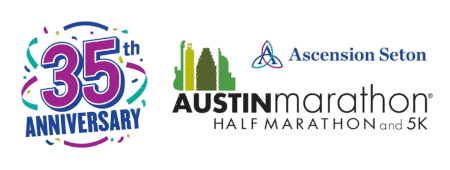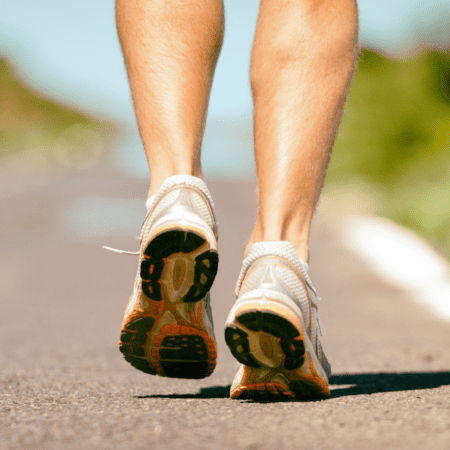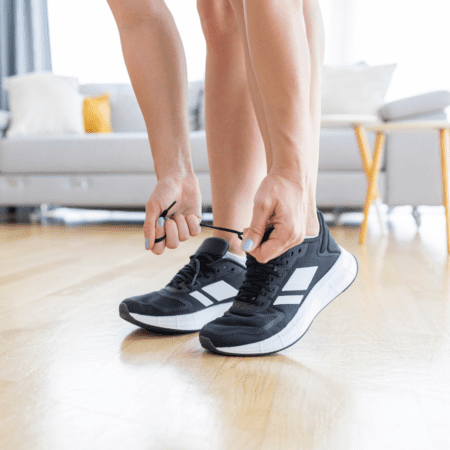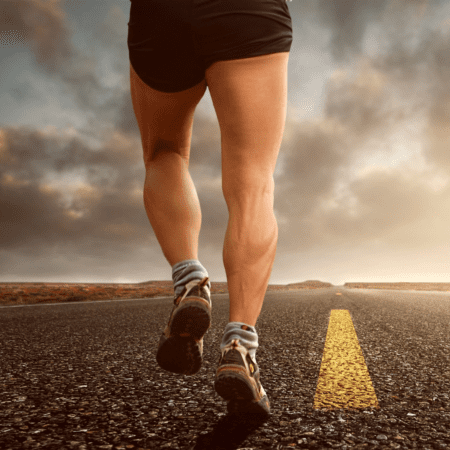Breaking in New Running Shoes: Tips for Happy Feet and Faster Runs
Are you a runner looking to break in your new pair of running shoes? Well, you’ve come to the right place! As you prepare for the Austin Marathon, the right pair of shoes can help you glide through the streets of downtown Austin, while the wrong fit can leave you struggling with discomfort long before you reach the finish line.
Whether you’re tackling the marathon for the first time or are a seasoned runner, breaking in your shoes correctly is essential to keeping your feet happy and ensuring peak performance on race day. Let’s dive into how you can break in those new shoes to avoid common issues like blisters, heel slippage, and arch pain—so you can focus on crossing that Austin Marathon finish line with confidence!
So, lace up your shoes and let’s dive in!
1. Start Slow and Steady
When it comes to breaking in new running shoes, patience is key. You might be tempted to hit the ground running with your fresh pair, but it’s important to ease into them gradually. Begin by wearing them for short walks or light jogs to allow your feet to adjust to the new fit and cushioning. This will help prevent discomfort and potential injuries.
2. Wear Them Around the House
One way to break in your new running shoes without putting too much stress on your feet is to wear them around the house. Whether you’re doing chores or simply lounging, having your shoes on will help mold them to the shape of your feet. Plus, it’s a great excuse to show off your stylish new kicks to your family and pets!
3. Gradually Increase Your Mileage
As you start incorporating your new shoes into your regular running routine, remember to gradually increase your mileage. Pushing yourself too hard too soon can lead to discomfort and even injury. Listen to your body and give it time to adapt to the new shoes. Gradually build up your distance and pace, allowing your feet to become accustomed to the support and cushioning.
4. Use Moisture-Wicking Socks
To keep your feet happy and blister-free during the breaking-in process, opt for moisture-wicking socks. These socks help to keep your feet dry by wicking away sweat, reducing friction, and minimizing the risk of blisters. Invest in a good pair of running-specific socks to enhance your comfort and overall running experience.
5. Don’t Forget About Shoe Lacing Techniques
Believe it or not, the way you lace your shoes can make a difference in how they fit and feel on your feet. Experiment with different lacing techniques to find the one that provides the best support and comfort for your unique foot shape. Whether it’s the runner’s loop, heel lock, or parallel lacing, finding the right technique can make a noticeable difference in your running performance.
Breaking in new running shoes doesn’t have to be a painful or frustrating experience. By following these tips, you’ll be able to transition smoothly into your new kicks and enjoy many comfortable and successful runs ahead. Remember, taking care of your feet is essential for any runner. If you have questions on shoes be sure to visit our friends at Fleet Feet. They have a wealth of knowledge and can do a 3D foot scan. So, take your time, listen to your body, and happy running!
Q/A Section:
Q1: How long does it typically take to break in new running shoes?
A1: The time it takes to break in new running shoes can vary from person to person. It usually takes around 1-2 weeks of regular use for the shoes to fully mold to your feet and provide optimal comfort.
Q2: Can I wear my new running shoes for other activities besides running?
A2: Absolutely! While it’s important to gradually break in your shoes through running, you can also wear them for other low-impact activities like walking or light gym workouts. This will further help in adapting the shoes to your feet.
Q3: Should I replace my old running shoes immediately after getting new ones?
A3: It’s generally recommended to gradually transition into new running shoes rather than abruptly replacing your old ones. This allows your feet and muscles to adjust to the new shoes, reducing the risk of discomfort or injury.
Troubleshooting Common New Shoe Problems
1. Why do my heels slip while running?
Problem: Heel slippage can lead to blisters and discomfort.
Fix: Use a “heel lock” lacing technique to secure your heel more tightly in the shoe. This will minimize the up-and-down movement that causes friction. If the shoe still feels too loose, it might be slightly too large, so consider sizing down.
2. Why do my toes feel pinched or numb?
Problem: Tightness in the toe box can cause discomfort or numbness.
Fix: Ensure there’s enough room between your longest toe and the shoe’s end. Try a looser lacing pattern near the forefoot or look for shoes with a wider toe box. If the issue persists, different lacing techniques, such as skipping the bottom eyelets, can help.
3. Why am I getting arch pain in my new shoes?
Problem: Arch pain suggests that your shoes may not provide enough support for your foot type.
Fix: Match your shoes to your arch type. Runners with high arches often need extra cushioning, while flat-footed runners may benefit from stability shoes. Custom orthotic insoles can also provide better arch support if needed.
4. Why am I getting blisters on my feet?
Problem: Blisters result from friction between your foot and the shoe.
Fix: Wear moisture-wicking socks, apply anti-friction balm to hot spots, and make sure your shoes fit securely, especially around the heel. Gradually break in new shoes by wearing them on shorter runs before increasing distance.
5. Why are my shoes rubbing against the back of my ankle?
Problem: The shoe’s design, especially a high collar or stiff heel counter, can cause rubbing and irritation.
Fix: Look for shoes with padding around the collar or consider cushioning the area with tape or blister patches. Make sure your socks provide extra padding and don’t bunch up.
6. Why do my shoes feel too tight across the top of my foot?
Problem: Tight laces or a narrow shoe design can cause discomfort across the top of your foot.
Fix: Try a “parallel lacing” technique to reduce pressure on the top of your foot. If the shoes still feel tight, it may be worth trying a wider size or model.











